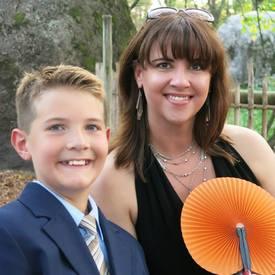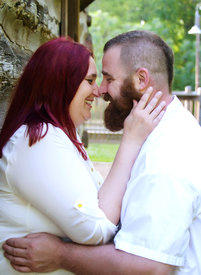Ho-made Bread.
Replies
-
This content has been removed.
-
Makes sense that hos would make wonderful bread to go with their puttanesca sauce.
My many years of bread baking have proven to me the superiority of bread flour and a slow rising time for a great yeast bread. I've always believed if kneading is good, more kneading is better- for yeast breads, at least.0 -
I would prefer not to eat bread made by a Ho.
Hmmm. That's funny. No one has ever complained before.0 -
Makes sense that hos would make wonderful bread to go with their puttanesca sauce.
Is that the opposite of how you make fudge???0 -
Makes sense that hos would make wonderful bread to go with their puttanesca sauce.
Is that the opposite of how you make fudge???
:sick:0 -
 0
0 -
I'm eating clean. Can I still have this?0
-
Makes sense that hos would make wonderful bread to go with their puttanesca sauce.
Is that the opposite of how you make fudge???
:sick: 0
0 -
Seriously... all awesome things I never knew about bread making. I'm one of those people "Well, if it says 120 degrees, 140 MUST simply be BETTER cause it's more!"

I can't make bread, but props for the Spinal Tap gif!0 -
[/quote]

[/quote]
Creepy Colbert is creepy.0 -
I made some whole grain wheat bread the other day and it wasn't super dense but was firm. It was what I would expect for a wheat bread. I just used my KitchenAid to knead the bread because I'm lazy like that.
When I use the water to proof the yeast (and a pinch of sugar) I use my ThermaPen to temp the water first. The yeast likes about 110F.
Did you use bread flour?
What kind of bread were you trying to make?
You can always start a sourdough starter for future use too.0 -
I bake bread a couple of times a month, and I've tried a lot of different variables. The one thing that's constant is that I never get good results with the rapid rise yeast.0
-
I would prefer not to eat bread made by a Ho.
Hmmm. That's funny. No one has ever complained before.
You know... I really really want to make an awfully crude joke about yeast here, but...
I shall refrain.0 -
bump0
-
For me quick yeast has always been ok, 1 gram yeast to every 100 grams of strong flour (Canadian is usually good) then ad 1.5gram salt and 60-65ml water per 100gm flour. If you over-knead try kneading for 30 seconds, cover loosely and leave to stand 10 mins. Now repeat 30 sec/10min rest 3 more times. Let the gluten do the work and you can really feel the difference in the dough each time. Rise about an hour, knock out the air, shape and prove 45-60 mins before baking. If you want to add cheese, olives, nuts/seeds etc do it at the shaping stage.
I always add the water to the hot pan in the oven after I've put the bread in, giving a hit of steam as you shut the door. In the first 5 mins you should see the loaf rise rapidly in the heat (oven-spring). Sometimes slitting the side of the dough with a knife just before you put it in can help this. Turn the oven down to avoid burning and let it cook -10 mins longer than you do now to help cook it right through. Finally don't be tempted to cut it till it's completely cool as it is still cooking inside and you'll let all the heat out! This works for me. Do keep experimenting whatever happens. It's the best bread, cheapest and you know exactly what you are eating. good luck!0 -
Serious post is serious.
I made bread from scratch this weekend and need experienced bread makers advice... It was very dense. I'd like something lighter and airier inside.
What I did was a basic flour, quick rise yeast, hot water, little sugar & oil... herbs & asiago cheese.
It was good, don't get me wrong, but very dense. Took about 6 hours, baked in a cast iron pot, dish of water in bottom of oven. Three separate Knead, Punch, Rise for an hour rounds of fun.
Any good recipes? I'm determined to perfect bread based on my own obnoxious definition of perfection.
Generally, if density is an issue, my mind tends to go to the yeast. Some factors could be:
1) Age of the yeast (it can expire)
2) Temperature of the water. You want it warm, but not so hot it kills the little guys.
3) Proofing / Rising time. Many of the recipes that I've done have multiple rising phases.
4) Making sure it gets enough sugar. You say "little sugar" but the idea of "little" can vary. Gotta make sure there's enough fermentable fuel in there for the yeast to make it's CO2 burps.
But definitely keep on trying. Bread making takes some practice and getting used to. It's also, in my experience, a little more fussy than other forms of cooking, thanks to chemsitry playing such a significant role in the baking process.0 -
One thing it doesn't look like anyone else has mentioned is salt in bread. It didn't look like you added any to yours, but for future reference: salt is vital in unflavoured bread otherwise it's very bland, but you have got to be careful about how much you add. Sugar is added to bread to help the yeast activate, but you don't want it to rise too much, so you add salt, which basically retards the yeast. If you add too much salt, your bread won't rise and it'll be dense. I made bread last week and mixed sundried tomatoes into the dough, and added salt too. It didn't rise at all. It still tasted good, but was a heavy bread. It's something to consider!0
This discussion has been closed.
Categories
- All Categories
- 1.4M Health, Wellness and Goals
- 398.5K Introduce Yourself
- 44.7K Getting Started
- 261K Health and Weight Loss
- 176.4K Food and Nutrition
- 47.7K Recipes
- 233K Fitness and Exercise
- 462 Sleep, Mindfulness and Overall Wellness
- 6.5K Goal: Maintaining Weight
- 8.7K Goal: Gaining Weight and Body Building
- 153.5K Motivation and Support
- 8.4K Challenges
- 1.4K Debate Club
- 96.5K Chit-Chat
- 2.6K Fun and Games
- 4.8K MyFitnessPal Information
- 18 News and Announcements
- 21 MyFitnessPal Academy
- 1.5K Feature Suggestions and Ideas
- 3.2K MyFitnessPal Tech Support Questions












